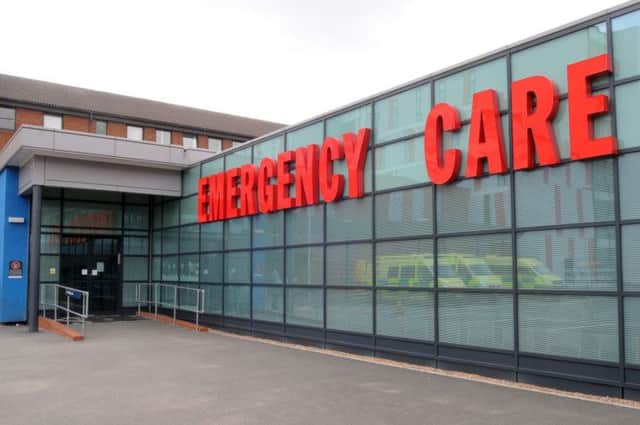Fall in hospital-treated injuries from violent attacks


The figures released by King’s Mill Hospital show that there were 900 attendances at its accident and emergency department in 2013/14 due to people suffering injuries following assaults - down from 1,045 the year before.
This fall mirrors the picture seen elsewhere in the country, which shows serious violence decreased by 12 per cent in 2013 according to the numbers of people who attended emergency departments, minor injury units and walk-in centres for treatment following violence.
Advertisement
Advertisement
However according to figures from Nottinghamshire Police, violent crime in the county actually rose in 2013/14, with 742 more offences committed than in the previous year.
But Chief Inspector Paul Winter said that the Mansfield and Ashfield area bucks this trend and has in fact seen violence fall by 1.1 per cent
“It’s only a slight reduction but it’s not a rise so it’s encouraging,” he said.
“The hospital data is also encouraging as it shows people are suffering less serious violence.”
Advertisement
Advertisement
According to King’s Mill’s data, the months that saw the highest number of people needing hospital treatment for injuries sustained as a result of violence were July and December.
In July 2013, 105 people needed medical attention, up from 82 in the same month the year before.
In December, 100 people needed medical attention, up from 86 the year before.
The month with the lowest attendance was March 2014, when 51 people attended A&E. This was down from 99 in March 2013.
Advertisement
Advertisement
Chief Insp Winter said that some of the increase in violent crime that Nottinghamshire Police has seen in the county could be put down to the force’s focus on encouraging victims of domestic violence to report offences that they experience.
“In the police service we do have a positive focus on asking people to record domestic violence,” he said.
“We would expect more low level assaults for things like domestic violence.”
There has also been a clampdown on violent offences in Mansfield town centre as the town strives to achieve the purple flag award - the national standard for a better night out.
Advertisement
Advertisement
This has included close working with licensed premises and risk assessments of particular evenings so that extra officers can be deployed as and when thought appropriate.
“If assaults were taking pace at a licensed premises, a quick action plan would be put in place to remedy that,” he said.
The location in which the highest number of assaults resulting in hospital treatment took place is public places, with 428 incidents occurring last year.
Next is the home, with 169 incidents, while 101 incidents occurred either inside or outside pubs.
Advertisement
Advertisement
These all saw the number of offences fall year on year, with the only incident location that recorded an increase in the number of cases needing hospital treatment being those that happened at educational establishments.
These were up from 31 in 2012/13 to 39 in 2013/14.
Dr Benjamin Owens, consultant and head of emergency care, at Sherwood Forest Hospitals Trust, which runs King’s Mill Hospital, said that attendances at A&E for injuries sustained due to violence were only a ‘small percentage’ of the 96,0000 attendance the department sees each year.
“There is no special protocol to treat patients attending with assault - the patient is treated according to their clinical needs,” he said.
“However, the trust does have a specialist domestic violence nurse and all staff are trained to assist patients who attend following assaults of this nature.
Advertisement
Advertisement
“Emergency Department staff are obliged to inform the police of any incidents involving knife and gun crime.
“Historically, Friday and Saturday nights have a higher incidence of alcohol-related violence, as do public holidays; in particular young males are affected by this.”
Chief Insp Winter added: “It is nice to look at other people’s data as more of a benchmark of what’s happening really.
“Nobody can dispute that somebody has turned up at hospital and given the explanation of why they are there.
“It’s really encouraging as police figures are always scrutinised and how they are recorded is scrutinised.
“It makes me very optimistic that the hospital data is painting the picture that it does.”